
Content production is the cornerstone of a solid online marketing strategy.
As the saying goes, “content is king,” and without engaging, valuable content, new visitors will bounce off your site onto a more useful one.

Not only that, but content is an extremely powerful tool that marketers use to educate their audience and attract new leads.
Content can also improve your website’s SEO rankings.
Did you know that by creating great content in the form of guides, blog posts, and linkable assets you can attract more natural backlinks to your site?
What is Content Production?
Content production is the process of creating written and visual products for distribution as part of an overall content marketing strategy.
This includes all the steps in the content production process, from idea generation to publishing the final piece.
In this article, we will be focusing on the process of content production.
Content Production is a System
While we’ll break down a lot of definitions for you in this article, if you only learn one thing, it should be this: content production is a system.
If you have a good system, you can produce good content.
While setting up a detailed, organized system with multiple steps might feel like a huge waste of your time, this is what will allow you to scale your efforts later, communicate roles and responsibilities clearly, and solve content production problems before they happen.
What is the Difference Between Content Production and Content Strategy?
Content strategy defines your goals and how you plan to use content to achieve those goals.
Content strategy always comes first, otherwise there's no way to measure the effectiveness of your content production system.
The difference between content production and content strategy can be defined as:
- Content production: the series of defined, documented, steps that take each piece of content from idea to publication and analyze its effectiveness in advancing your content strategy.
- Content strategy: the plan that informs what you publish, how you publish and why you publish (ie business value).
As a digital agency, it's sometimes not immediately obvious to the client why they need a content strategy. Some clients may see content strategy as an irrelevant or throw-away step but it's in fact the most important.
Richard Kennedy, Managing Director at UK-based SEO & content marketing agency Arken Marketing solves this challenge by putting the client in the shoes of their customer:
"If I can show the client that the questions they have around our service are the same questions their customers are having about theirs, it's easier to get them on board. Once I've shown them how it helps them personally better understand our service, it's a lot easier to get buy-in."

Optimizing each step of your content production process accomplishes several things:
- Maintains a steady flow of content
- Allows you to quickly identify problems with your content production process
- Lets you alter the types of content you produce to meet new goals
- Enables clear communication across teams
6 Elements of an Effective Content Production Process
Now, let’s discuss 6 of the key traits of any successful content production process.
1. Goal Setting
Each piece of content should be written with the aim of advancing one of these three goals:
- Awareness
- Consideration
- Conversion
These three steps correspond broadly with the beginning, middle, and end of the marketing funnel, also called the buyer’s journey.
In other words, each individual piece of content you publish should be aimed at nurturing awareness of your brand, gaining new leads, or encouraging sales.

By defining your content’s specific purpose before you even begin producing it, you make it easier to track the success of the project.
Some marketers want their content to do all three, but this is ineffective.
Quality content that converts addresses an individual buyer at his or her particular stage of the journey.
By cramming awareness, consideration, and sales into one package, you make the content too general and lose the attention of your prospect.
2. Decide What Types of Content to Produce
Now that you know the purpose behind your content production, you need to decide the form it will take.
There are a couple of different ways to think about this. You can categorize your content according to form of access or its format. We’ll cover both.
Cornerstone, Gated, and Evolving Content
There are three main types of content on most websites:
- Cornerstone
- Gated
- Evolving
Lydia German, Marketing and Outreach Coordinator at UK-based digital agency Tao Digital Marketing says these 3 types of content work in conjunction with each other; therefore the performance of each piece is codependent on the others.

Cornerstone content is longer, high-authority articles that are foundational to your brand. These usually build awareness of who you are, what you offer, and why you are an authority. Cornerstone content tends to be featured on landing pages for easy access. Lydia says cornerstone content production varies depending on the type of client:
"If you are working with a relatively new business, you may be responsible for creating the first cornerstone pieces at the very core of a new site. These are crucial and require time, dedicated and thorough research and a lot of discussions with the client. If you nail your cornerstone pieces, the following work you do will then already have a baseline advantage."
Gated content requires opt-ins from your leads, usually in the form of an email subscription. This builds consideration of your brand. Email series, weekly podcasts, and downloadable guides and templates are usually gated content that generate leads.

In this example, HubSpot and LinkedIn have created a LinkedIn for Business and Marketing guide which is gated with the following form:
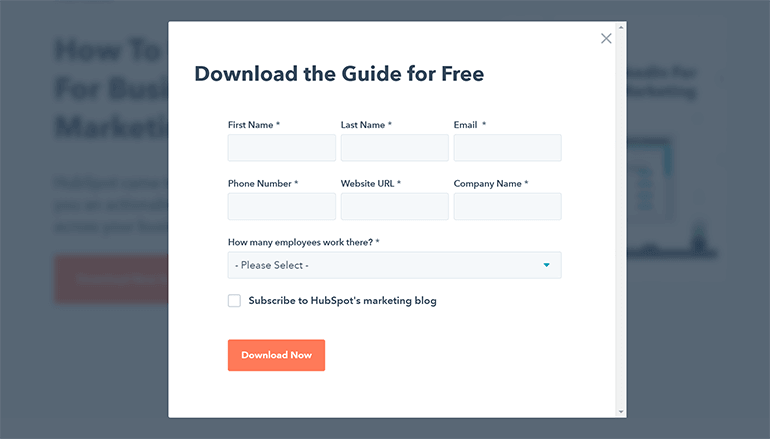
Lydia cautions that the underlying asset must be high value.
"Grabbing at contact details through gating poor and uninspiring content that gives a reader no value, is a waste of time and effort."
Evolving content is simply content that changes over time. While your cornerstone content tends to remain the same, evolving content is everything that gets updated frequently. Evolving content can include sales-focused content, like promotional media, or time-sensitive content like social media posts.
Digital, Print, and Video Content
The content’s format determines the content production process you will need. Your content production team might consider:
- Blogs
- Webpages
- Emails
- Podcasts
- Videos
- Social Media Posts
- Whitepapers
- Templates
- Infographics
3. Establish Roles in the Content Production Process
The type of content you decide to produce determines who will be involved in that process.
Sometimes one person wears several hats, especially in a smaller organization, while a large company might have entire teams dedicated to each of these categories. Depending on what kind of content you are creating, you might need the following content producers:
- Writers/Researchers
- Proofreaders/Editors
- Videographers
- Photographers
- UX/UI Designers
- Graphic Designers
- Content Manager/Producer
While each piece of content likely won’t need each kind of professional in the mix, something technically complex like a video series with infographics will have writers, researchers, editors, videographers, and graphic designers all working together.
But throwing in more people into the mix isn't always the solution. Richard from Arken Marketing says it's a lot easier by not involving too many people at any certain step.
Lydia from Tao Digital Marketing says an effective approach when planning content, is to decide up-front whether a piece is collaborative or better off left to an individual.
"If it is collaborative, ensure that those working on that task have the same brief and are equal in their understanding of the outcome. By doing so, we start off on the right foot and reduce the need for backtracking."
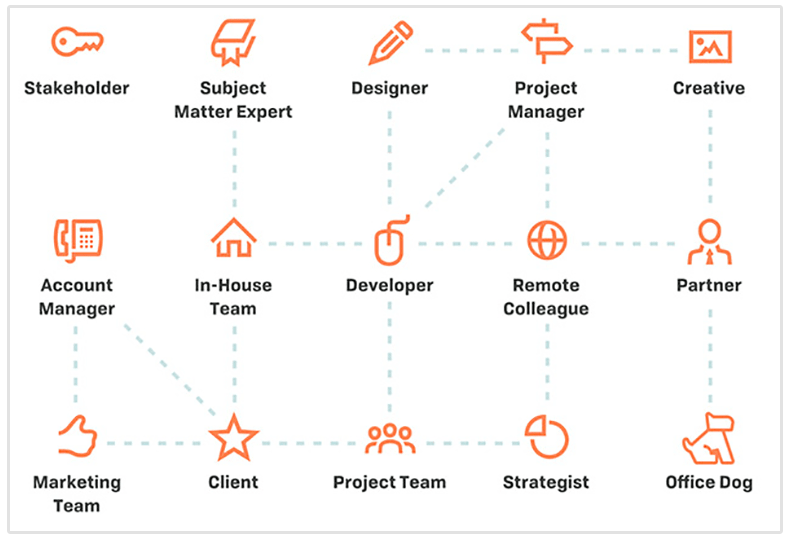
This is why the content production process is so important. You need a way to facilitate the sharing of ideas and content among all these people.
4. Choose Your Tools and CMS
The tools you choose will significantly impact your content production in three key ways:
- End Results: The right tools can streamline the creation process, enhance collaboration, and ensure consistency across your content. This translates to higher quality content that resonates with your audience.
- Costs: Different tools come with different pricing models. Choosing the right ones can save you money by optimizing resource allocation and avoiding unnecessary subscriptions.
- Resource Allocation: The right tools can automate tedious tasks, freeing up your team's valuable time and energy for more strategic work.
A crucial element of your content production toolkit is a Content Management System (CMS).

Note: we will share some top tools for content production at the end of this article.
A CMS acts as the central hub for all your content, allowing you to easily create, edit, schedule, and publish content.
Here's why a CMS is a game-changer for your content production efforts:
- Simplified Content Creation: A user-friendly CMS empowers even non-technical users to create and edit content. This means your team can focus on crafting compelling content, not wrestling with complex coding.
- Streamlined Collaboration: A CMS allows multiple team members to work on content simultaneously, fostering seamless collaboration and improved content quality.
- Scalability and Organization: As your content library grows, a CMS keeps everything organized and accessible. Features like version control ensure you never lose track of revisions.
- Omnichannel Publishing: Many CMS platforms offer built-in features for publishing content across various channels, saving you time and effort.
On that note, check out this blog post that we recently created on the best Content Management Systems for SEO.
5. Create a Bank of Content
Building a content bank is a strategic move that can significantly enhance your content production process. A content bank, essentially a reservoir of pre-developed content assets, serves as a valuable resource for ongoing campaigns and future initiatives.
But why would you want to create a content bank?
Creating a content bank offers several advantages:
- Consistency: It ensures consistency in your content output by providing a repository of approved, ready-to-use content pieces.
- Efficiency: Having a content bank reduces production time as content creators can draw from existing assets rather than starting from scratch.
- Flexibility: It allows for agile content deployment, enabling quick responses to market trends or unexpected opportunities.
- Quality Control: By storing vetted content, you maintain control over brand voice, style, and messaging across all channels.
- Scalability: As your content needs grow, a well-maintained content bank facilitates scaling without compromising quality.
6. Content Production SOP
Developing a Standard Operating Procedure (SOP) for your content production process is crucial for maintaining consistency, quality, and efficiency.
An SOP serves as a roadmap that outlines the specific steps and guidelines to follow from ideation to publication.
While specific steps may vary depending on your organization and content strategy, a typical Content Production SOP includes:
- Ideation and Planning: Define content goals, target audience, and messaging. Plan content calendars and themes.
- Content Creation: Outline roles and responsibilities for writers, designers, and editors. Set guidelines for content formats, SEO best practices, and brand voice.
- Review and Approval: Establish a review process involving stakeholders to ensure accuracy, compliance, and alignment with objectives.
- Editing and Optimization: Refine content for clarity, consistency, and SEO optimization. Incorporate feedback from reviewers.
- Publishing and Distribution: Outline steps for scheduling, publishing, and promoting content across relevant channels (website, social media, email newsletters).
- Performance Monitoring: Define metrics for measuring content performance (engagement, conversions) and procedures for analyzing results to inform future content strategies.
What Does a Content Producer Do?
A quick word about contented producers, who are sometimes also called content managers.
These professionals oversee the lifecycle of the content and are often responsible for ensuring all the creative and technical aspects of the content align.
This often means lots of attention to things like meta descriptions, content brief creation, and team meetings.
A great example of this comes from Craft Your Content, where Erika Rasso explains her work as a content producer and how it’s a bit like a film producer’s.
If your organization tends to have a lot of little content tasks accumulated with no clear point person to handle them, it might be time to hire a content producer.
Example of a Great Content Production Process
We’ve told you how crucial having a process is, and now we’re going to give you the anatomy of a great content production process.
- Content Production Goals
- Team
- Tasks
- Timeline
- Review/Analytics
Content Production Goals
Start by deciding what particular part of your content strategy will be advanced by this content. Ideally, your content should be planned out several months at a time and broken down into smaller goals to advance larger ones.
For example, your goal may be to increase sales by 5% this year, and so you will launch an email campaign with a smaller goal of increasing sales by 2% over the next quarter.
Or perhaps a video series will be aimed at increasing brand mentions across social channels, advancing a larger goal of increased brand awareness.
Tips
- Create a research-backed content brief clearly outlining goals
- Hold a team meeting to answer questions
- Plan content and goals for a few months at a time to increase efficiency
Team
The team members assigned to a particular content project should be made clear every single time. Clearly communicate who is responsible for what to prevent confusion later.
You should be excessively clear on which tasks are assigned to each team member and in which order they should be completed.
A good workflow management tool will help with this, but even writing it down on a whiteboard is better than no communication.
Tips
- Ensure each team member knows which role they play in the content production
- Assign specific tasks
- Clarify the order of operations and handoffs
Tasks
Though often confused, tasks and roles are not the same. Tasks should be broken down into their smallest possible components and each one assigned to a specific team member.
For example, is the writer responsible for uploading the final blog copy to WordPress, or does the editor do that? Should your graphic designer gather data for an infographic, or is someone else responsible for conducting that research?
Assigning each task is a good way to identify if one team member is carrying too much of the process themselves or if you can consolidate tasks under one role in the future.
Tips
- Break down tasks into the smallest possible units
- Invite feedback upon assignment of tasks – sometimes it makes more sense for someone else to take on a task
- Create a clear way to signal completion of a task by using good workflow management and content access tools (discussed more below)
Timeline
It works best to work backwards to create your timeline.
Start from the final publication date for your content, and make sure to add in specific dates for all the steps of your process. This lets each member of the team know when their piece is due.

For example, a blog with a final publication date of July 1 might mark an outline due on June 6, images due on June 10 and editors’ comments returned to the writer by June 19 to allow enough time for revisions.
Tips
- Include enough time for editing and revisions
- Add an onboarding process for new ideas to be integrated into the timeline
Review/Analytics
This is how you answer the all-important question: did it work?
You should have analytics built into your marketing strategy, and it’s important to consider it as a part of your content production lifecycle as well.
As a content team, this is also your chance to fine-tune your process.
Did each team member have access to the correct element on time? Were there communication issues?
Problems indicate weaknesses in your process. These can be easily fixed to make your system better next time around.
Useful Content Production Tools
Access to content elements and efficient handoffs of completed work are essential to a smooth content production process.
We all want to avoid the nightmare of endless group email chains where we are spammed with irrelevant updates but lose important details.
A few simple organizational tools can help with that.
Keyword Research Tools
The first and most obvious tool you need in your content production process is a keyword research tool to find low-hanging content opportunities.
SEOptimer has a top keyword research tool that’s already being used by hundreds of marketers and digital agencies around the world.
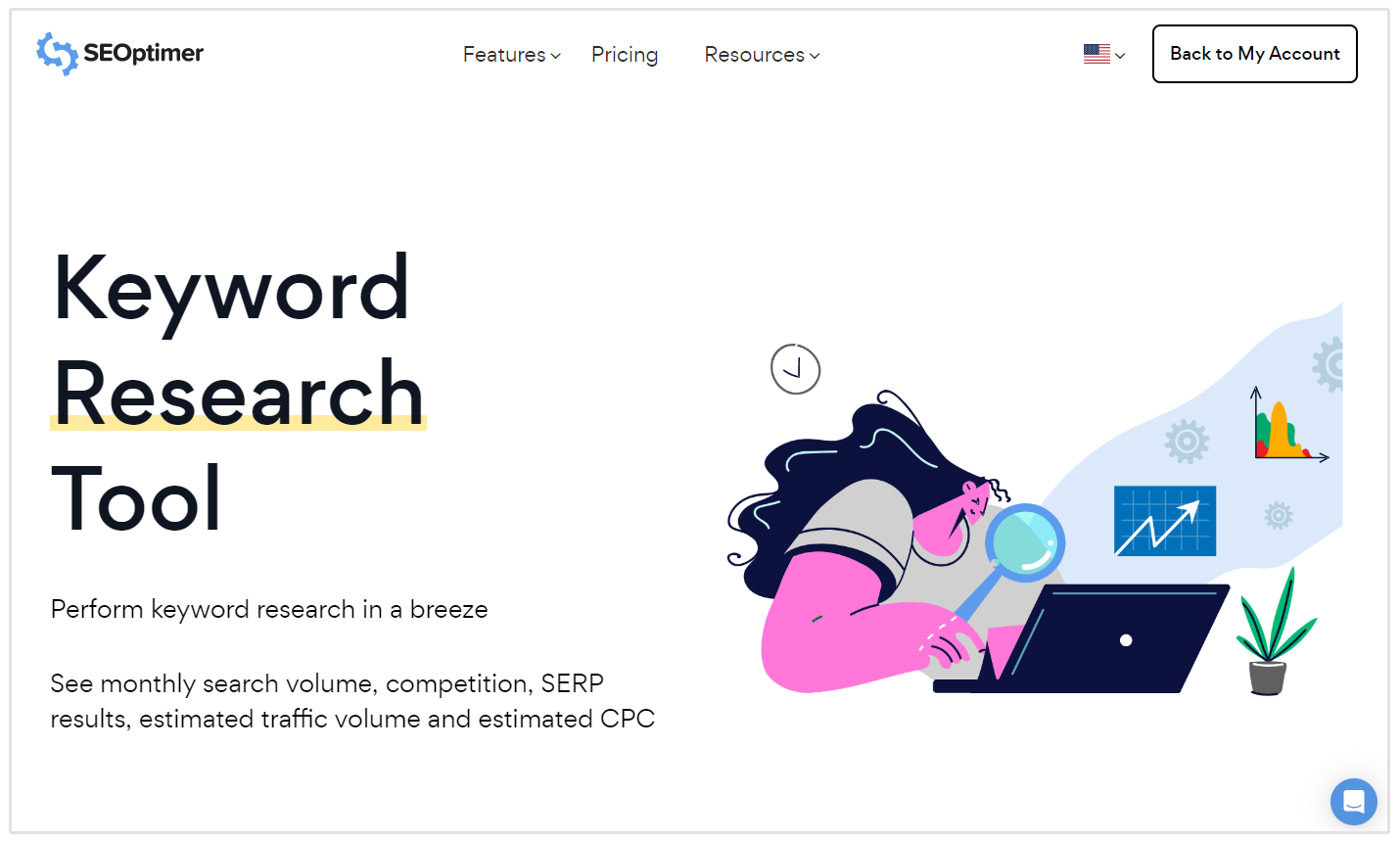
With our tool you can find detailed information on the average monthly search volume, ranking difficulty, and CPC of any keyword.
In addition to that you can also check the SERP results for each keyword you’re interested in.
For instance, let’s say you want to research the keyword “recommended dog food for puppies”, you can check all of the metrics that I mentioned, plus you can see the current search results page.
This gives you a quick overview of the current SERP and ranking results.
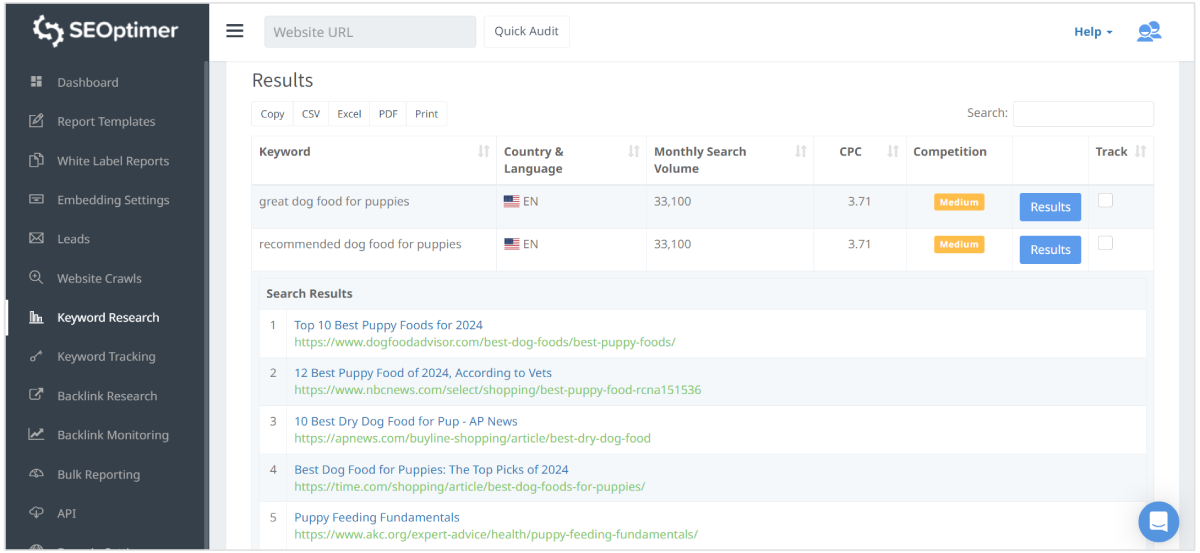
Workflow Management Tools
Since content workflow boils down to organization, the simpler and more intuitive the tool you use, the better.
The most helpful content production tools are:
- Workflow Management Systems
- Customizable Content Calendars
A centralized workflow management system can do wonders for your team’s productivity. There are lots of cloud-based systems available.
One good option for content production is Trello.
With scalable options, it offers a Kanban-style board to manage tasks and assignments and can integrate with many other tools including Google Docs.
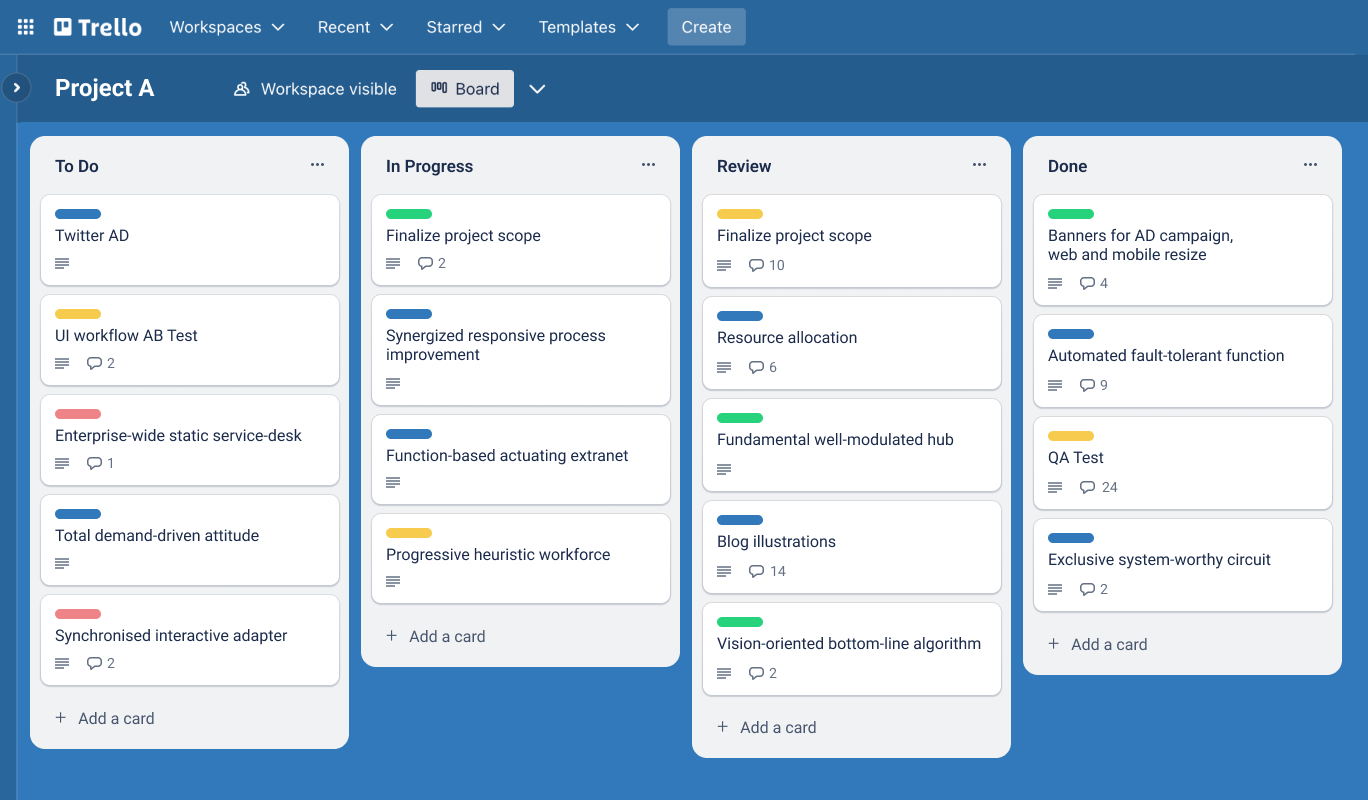
Content Calendars
Something as simple as a content calendar can help you with your long-term planning and goal alignment. There are specific calendars available for specific content needs, like social media calendars.
Airtable offers a downloadable calendar that reads like a simple spreadsheet and has custom fields for targeted keywords. The list view might be less overwhelming than a KanBan board for some.
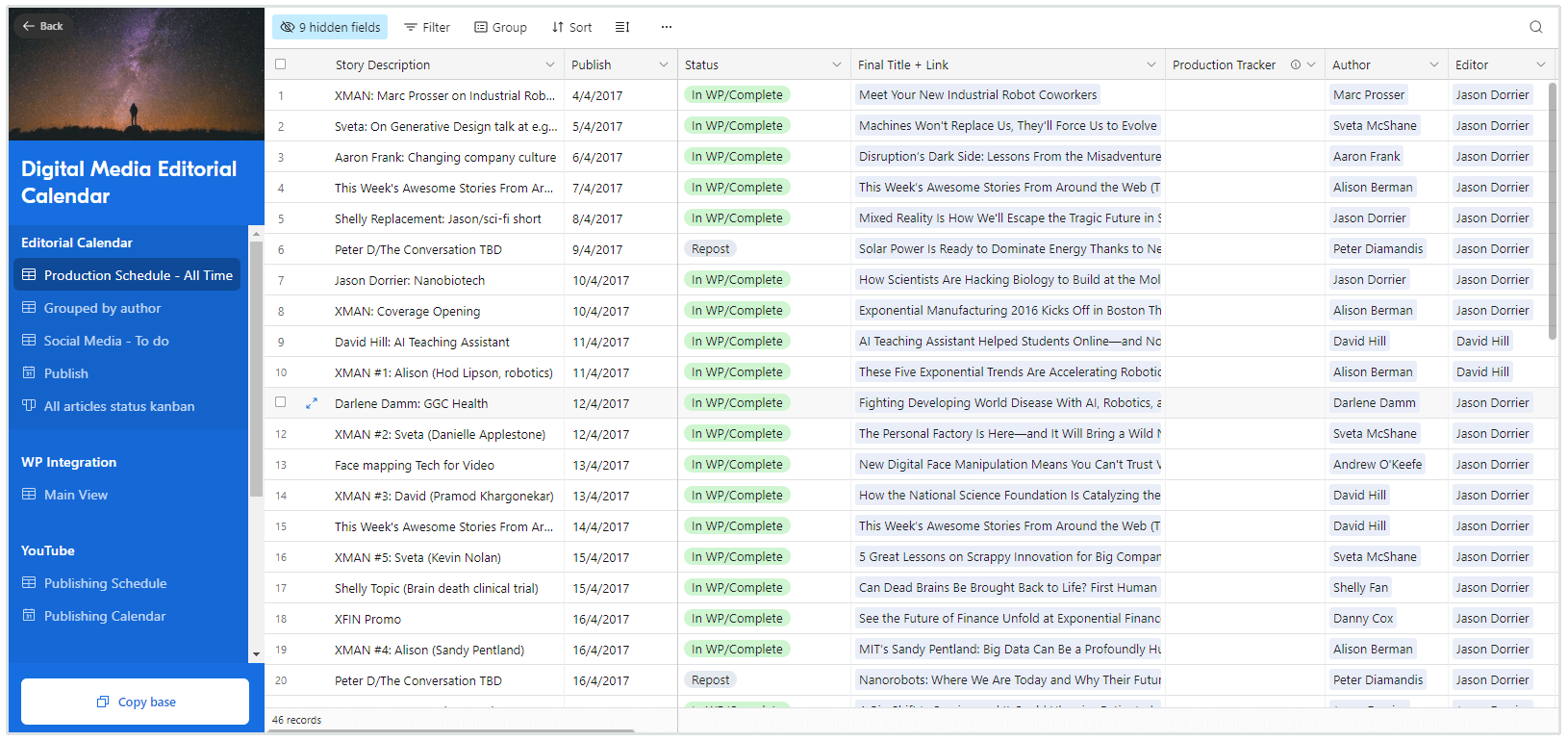
Content Access Tools
If each task is to progress naturally to the next and team members aren’t going to be twiddling their thumbs waiting for the handoff, you need easy access to content at each stage of development.
Ideally, each team member should be able to finish his part of the project, save it to the correct folder, and then start on the next project waiting with no delays. As with workflow, content access should be as simple as possible.
Numbered Folders
If everyone on a project has access to the same cloud or shared drive, you can set up a simple series of folders.
Keep the labels clear and consistent, so you aren’t reinventing the wheel each time you write a new blog post. For example:
- Images_Blog1_May2021Campaign
- EditedImages_Blog1_May2021Campaign
- Data_Blog1_May2021Campaign
- Draft_Blog1_May2021Campaign
- EditorApproved_Blog1_May2021Campaign
Simply by making sure that the content elements are added to the correct folder at each lifecycle stage, team members can clearly see when the work is ready for them.
This way, you don’t constantly have editors emailing writers and photographers asking when the work will be ready for them: they can just check the folder.
Bottom Line
Great content requires a great process. Initially, creating several steps may seem like it hinders the creative process, but it ultimately allows each member of your team to move forward with the content production process with confidence.
How do you manage your content production process? We'd love to hear your thoughts on Twitter @seoptimer.










